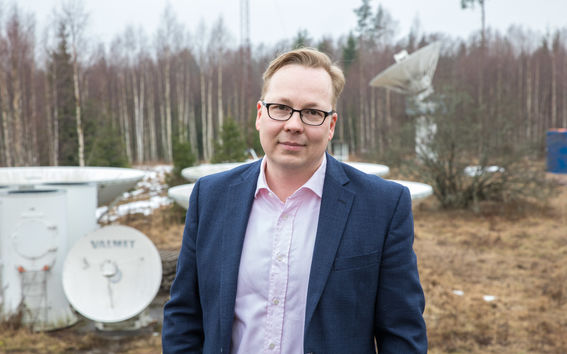A year ago, the world saw the first image of a black hole – maybe the next time we will see a film

A year ago, on 10 April at 4.08 pm Finnish time, we saw for the first time what a black hole looks like. The historical image interested people around the world and decorated the front pages of all the world's most prestigious magazines. The magazines Science and Physics World declared it the scientific breakthrough of the year. The photo was also selected to the permanent collection of the Museum of Modern Art in New York (MoMa). For the Event Horizon Telescope research team, one of the highlights of the year was being awarded the Breakthrough Prize, known as the “Oscar of Science”.

Docent Tuomas Savolainen works at Aalto University Metsähovi Radio Observatory, and he was the only Finnish researcher involved in the breakthrough. For Savolainen, the publicity brought by the breakthrough has meant an increased amount of different speaker requests. In addition to seminars and workshops, he has visited various public events more often than usual to tell about the black hole. Space is something that interests ordinary people as well.
Savolainen's personal highlight was the press conference held in Brussels where the image of the black hole was revealed. He realised the great and wide significance of the photo most concretely when he was visiting a friend last summer, playing board games with the friend and the friend's son.
‘My friend had told his son that I had been involved in capturing the image of the black hole. The breakthrough had also been enthused over at his school. It was only afterwards that I heard how excited this 11-year-old boy had been about meeting me.’
Research continues
The international Event Horizon Telescope (EHT) research team continues to investigate black holes. Currently, the team is working on two large projects.
In the first of the projects, the researchers are trying to obtain an image of the black hole in the centre of the Milky Way. It is not an easy thing to do, however, as the black hole in the centre of our galaxy is smaller than the black hole in the galaxy M87, the image of which we admired a year ago. Due to the “small” size of the black hole in the Milky Way, it takes less than 20 minutes for matter to orbit around it. In the galaxy M87, it takes days or even weeks for plasma to orbit around the black hole. The exposure time of the image is approximately eight hours, in which time the matter has orbited the black hole in the Milky Way several times. Moving objects are harder to photograph.
Tuomas Savolainen says that obtaining an image is difficult, but not impossible. To work around the problem, researchers are experimenting with imaging algorithms that produce a film instead of a single image. A moving image would show how the matter circulates around the black hole.
A crescent or a peanut?
Based on theory, researchers conclude that the black hole in the centre of the Milky Way is similar to the black hole in M87, with a dark region in the middle, surrounded by a bright ring.
‘But will the image be an equally pretty ring as the one we saw a year ago – that remains to be seen. The pattern it makes may look more like a crescent or a peanut.’
In the second project, the researchers are analysing the polarisation data that gives them more detailed information about the magnetic field surrounding the black hole in the galaxy M87. Polarisation is related to how light travels as a transverse wave. This spring, the EHT research community had planned to make more observations, but the coronavirus has closed the observatories almost completely, so observation-making has been postponed to next year.
Aren't you getting tired of the black holes?
‘I've been studying black holes for a long time, but they do not bore me. Particularly now, when I've just been involved in making a major breakthrough. I believe that we will have an opportunity to get more interesting research results in the near future.’
Docent Tuomas Savolainen works at Aalto University Metsähovi Radio Observatory, which is the only astronomical radio observatory and continuously operational astronomical observation station in Finland. Savolainen is the only Finnish member in the EHT, and he was engaged in analysing the huge amount of data used to produce the image of the black hole.
- Published:
- Updated:
Read more news

DeployAI Partners Gather for Heart Beat Meeting in Helsinki
The European DeployAI project's partners gathered for the Heart Beat meeting hosted by Aalto University Executive Education in Helsinki.
Get to know us: Associate Professor Maria Sammalkorpi
Sammalkorpi received her doctorate from Helsinki University of Technology 2004. After her defence, she has worked as a researcher at the Universities of Princeton, Yale and Aalto.
Aalto computer scientists in ICML 2024
Computer scientists in ICML 2024